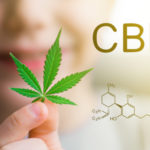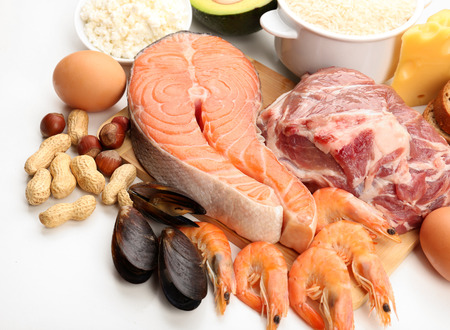Fat is one of the three nutrients (along with protein and carbohydrates) that supply calories to the body. Fat provides 9 Calories per gram, more than twice the number provided by carbohydrates or protein. Most Americans consume about 36 percent of their dietary requirements from fats, which is about 110 pounds per capita consumption; this is too high, but more about this later. The most important functions of fat in the body include:
1) energy source and reserve;
2) protection of vital organs;
3) thermal insulation; and
4) vitamin carrier and hunger suppressor.
Fat serves as the storage substance for the body’s extra calories. It fills the fat cells (adipose tissue) that help insulate the body. Fats are also an important energy source. When the body has used up the calories from carbohydrates, which occurs after the first 20 minutes of exercise, it begins to depend on the calories from fat.
Up to 4% of body fat protects against trauma to vital organs, i.e., liver, heart, kidneys, spleen, and spinal cord. In this case, persons with more fat such as football lineman, are better able to protect their vital organs from punishing blows. The fat just below the skin (subcutaneous fat) provides insulation in harsh conditions such as cold weather. However, during hot weather, excess body fat can hinder body-temperature regulation, especially during sustained exercise in air when the body’s heat production can be as much as 20 times greater that during resting levels.
Fat is essential for the proper functioning of the body. Fats provide the “essential” fatty acids that are not made by the body and must be obtained from food. Linoleic acid is the most important essential fatty acid, especially for the growth and development of infants. Fatty acids provide the raw materials that help in the control of blood pressure, blood clotting, inflammation, and other body functions. Also, healthy skin and hair are maintained by fat. Fat assists in the absorption and transport through the bloodstream of the fat-soluble vitamins, i.e., vitamins A, D, E, and K. Approximately 20 grams of dietary fat each day is the minimum required amount to maintain adequate absorption and transport of the aforementioned vitamins. Severely reducing fat intake can depress the body’s level of these vitamins, which can ultimately lead to vitamin deficiency. About 3.5 hours is required after ingestion for the stomach to empty itself of fats. Thus, eating foods that contain fat will make one have hunger pains less often.
Recommendations for Fat Consumption:
- Choose lean, protein-rich foods — soy, fish, skinless chicken, very lean meat, and fat free or 1% dairy products.
Eat foods that are naturally low in fat such as whole grains, fruits, and vegetables. - Get plenty of soluble fiber from foods such as oats, bran, dry peas, beans, cereal, and rice.
- Limit consumption of fried foods of all kinds, processed foods, and commercially prepared baked goods (donuts, cookies, crackers).
- Limit animal products like egg yolks, cheeses, whole milk, cream, ice cream, and fatty meats (and large portions of meats).
- Search food labels, especially for the level of saturated fat. Avoid or limit foods high in saturated fat, i.e., more than 20% on the label.
- Search food labels for words like “hydrogenated” or “partially hydrogenated” — these foods are loaded with saturated fats and trans-fatty acids and should be avoided.
- Liquid vegetable oil, soft margarine, and trans-fatty acid-free margarine are preferable to butter, stick margarine, or shortening.
Children under two years of age should NOT be on a fat restricted diet because cholesterol and fat are believed to be important nutrients for brain development.
It is important to read the nutrition labels and be aware of the amount of different types of fat contained in food. It is recommended that everyone over 20 have their cholesterol checked on at least an annual basis. Talk to your health care provider about how to cut down on fat intake. Look at our “Good Foods” category in the “Burning Fat” section for general guidelines of foods to eat and foods to avoid.
Side effects
Eating too much saturated fat is one of the major risk factors for heart disease. A diet high in saturated fat causes a soft, waxy substance called cholesterol to build up in the arteries. Too much fat also increases the risk of heart disease because of its high calorie content, which increases the chance of becoming obese (another risk factor for heart disease and some types of cancer).
A large intake of polyunsaturated fat may increase the risk for some types of cancer. Reducing daily fat intake is not a guarantee against developing cancer or heart disease, but it does help reduce the risk factors.
Fat Dynamics in Exercise: Fats supply 30 to 80% of the energy used in physical activity depending on the nutritional and fitness status of the individual and also the duration and intensity of exercise. Compared to resting, fat used for energy in light and moderate exercise intensity is three times greater. However, even with more intense exercise or a greater percentage of aerobic activity, the release of free-fatty acids from adipose tissue (fat stores on the body) does not increase much above resting. Hence the argument on which exercise burns fat the best. Research of the evidence suggests that it’s not necessarily the exercise, but the method of training with the exercise that is best for fat burning. Why?
We know from research that a well-trained person exercising at light to moderate levels, i.e., less than 40% of maximum, that fat provides the main energy source, mostly as plasma free-fatty acids mobilization from fat stores (adipose tissue). When compared to increasing intensity levels of up to 85%, the total energy from fat breakdown remained almost the same. The latter indicates that muscle glycogen is the major fuel for high-intensity aerobic exercise. However, muscle glycogen generally drops to almost nothing after 20 minutes of exercise and with continued exercise, the muscle cannot replenish this glycogen. At this point, a greater fat metabolism begins to exist, i.e., during prolonged exercise. This is believed to result from a small drop in your blood sugar and decrease in insulin (a very potent inhibitor of lipolysis, i.e., breakdown of triglycerides), with a corresponding increase in the pancreas’s glucagon output. In lay terms, this means that as you exercise longer, the glycogen stores in the muscle deplete and you begin to burn more energy from fat than carbohydrates. But, as you continue to exercise, fat cannot usually sustain the energy demand from the body. When this happens, because you have no more muscle glycogen stores and energy supply from fat stores is too slow, energy is derived or obtained from protein. The supply of this protein energy is your actual muscle mass. This is why long-distance runners lack muscle mass compared to track and field athletes.
If you do not mind having a very slender or lean appearance, this would not be as important to you. However, if you wish to maintain muscle mass, but also lose as much fat as you can, marathon running would not be the best choice of exercise for you. Actual training and exercise methods for burning fat are discussed more completely in the “Fat Burning” section. Hopefully, this discussion has given you some insight about the importance of it in our diet. While low-fat diets are good and healthy from a nutritional point of view, going to the extreme of no- or all-fat diets can be detrimental to your health.






